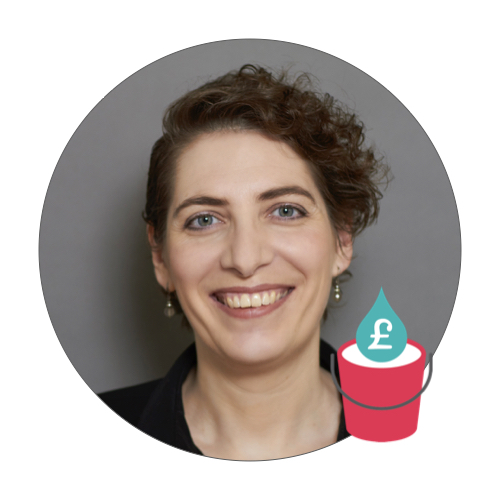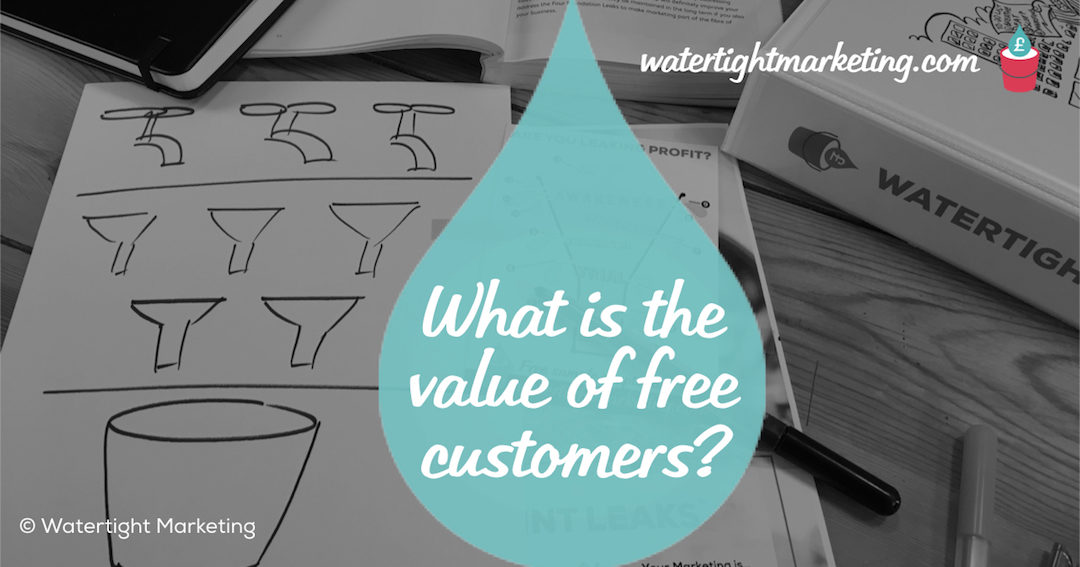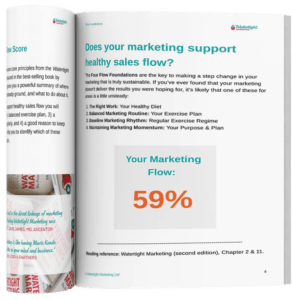No doubt you will have spotted some very clever companies giving away their products and services for free. People like Mailchimp, who offer a Forever Free account – or 4Imprint, who send a Blue Box of free samples to prospective customers every month. And, of course, the social platforms like Facebook, Twitter, etc.
We do it ourselves here at Watertight Marketing, with an invitation to people who’ve bought their copy of the book to register it for free to join the Members’ Club.
You’ve probably also heard that if you give stuff away for free that no-one will value it. So, let’s explore the value of having free customers.
5 ways that ‘free’ customers provide value
1. Benefit from positive word of mouth
Having a bank of customers who are gaining benefit from your product for free gives you massive word of mouth opportunities. I’ve lost count of the number of people I’ve recommended the Mailchimp system to even though I have never paid them a penny. What’s more I do things like mention them in blogs (oh look I’m doing it now).
If you’re smart about creating a free service that is genuinely useful, then make it really easy for people to share your details, you will create an army of advocates who are effectively doing your marketing for you. You’ll also often find a number of your non-paying customers more than willing to appear in case studies for you. And, we all know how powerful a real life case study can be.
2. Monetise their goodwill with an affiliate scheme
At the bottom of every email sent via the free Mailchimp account is an affiliate link. If you click on it, and then sign-up, the sender will get Monkey rewards to spend on handy add on extras like inbox inspections. One of the stipulations on their free account is that an affiliate badge goes out on the bottom of the emails you send out via their system. So, again their non-paying customers are doing a great job of marketing their product. A little reward for doing makes it even more likely that they will do so. Alternatively, you monetise their good will by putting other people’s services in front of them. This is the Facebook model.
3. Create a barrier to entry to competitors
If your free version is genuinely useful it is likely to mop-up people who may have gone to competitors undercutting your price. And, by getting as many people signed-up and using your service, you then pose competitors with the challenge of getting people to switch. And, being as people are pretty lazy on the switching front, this makes it harder for them to get a foot hold.
4. Mobilise their feedback for product development
The great thing about non-paying customers is that they usually know the deal. They’re getting something from you, so it’s only fair that they give a little back. You can make it a contracted part of the deal that they provide certain levels of feedback, and invite them to complete surveys, questionnaire or qualitative feedback groups to review and test new features or ideas. In fact, you’ll often find that non-paying customers are more likely to do this sort of thing for you than paying ones.
5. Provide an upgrade path to paid services
Lastly – the obvious one – you have a pool of people to sell to. If you’ve structured an effective product ladder there will be a few features that people really value that are just out of reach on the free version. This gives you an excellent way to up-sell people to the next level of functionality. You can also make available a set of add-on or one-off paid for services appropriate to these people that can give you an excellent additional income stream.
So, whilst converting non-paying customers into paying customers is the most obvious way to think about their value – if this is the only objective you have in mind for them – you’re definitely missing a trick (or four).
© Bryony Thomas – The Watertight Marketer

Bryony Thomas
Author & Founder, Watertight Marketing
Bryony Thomas is the creator of the multi-award winning Watertight Marketing methodology, captured in her best-selling book of the same name. She is one of the UK's foremost marketing thinkers, featured by the likes of Forbes, The Guardian, Business Insider and many more, and in-demand speaker for business conferences, in-house sales days and high-level Board strategy days.


